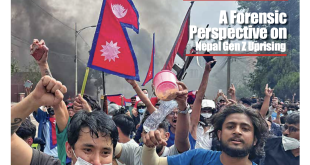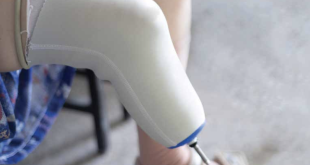 Dr Prakash Kandel
Dr Prakash Kandel
He is a distinguished healthcare leader renowned for his expertise in healthcare management, patient safety, quality improvement, and health policy reform. Currently serving as Co-Chief Executive Officer of the Center for American Medical Specialists (CAMS-Nepal) Optima (since Nov 2024), he leads strategic initiatives focused on delivering high-quality, value-based care and enhancing clinical service scalability. Previously, as Associate Medical Director at Lawrence Memorial Hospital / Yale New Haven Health System (2019-2024), Dr. Kandel directed a large hospitalist program, achieving measurable improvements in clinical operations and patient outcomes. He actively partnered with cross-functional leadership teams to align strategy with execution. A national speaker, Dr. Kandel consistently advocates for viewing healthcare challenges through a system lens and embraces the spirit of continuous improvement. He has been a champion for enhancing the patient experience throughout his leadership roles and advocates for meaningful health policy reforms. Dr. Kandel’s career bridges clinical practice, operational leadership, strategic vision, and a passion for improving healthcare systems globally.
THE WOUNDS — A SYSTEM IN CRISIS
Kathmandu, July 2023 — In a landmark ruling, the Supreme Court of Nepal found Kanti Children’s Hospital guilty of gross negligence after an 8-month-old child was administered the wrong medication. The child now lives with severe physical disability, hearing loss, and impaired vision. The court ordered the hospital to pay NPR 3 million in compensation, citing failure to follow basic safety protocols and obtain informed consent. [Source: Kathmandu Post, 2023]
Kathmandu, June 2025 — Nepal’s newly established Consumer Court issued its first major judgment against Om Hospital & Research Centre. A 98-year-old patient was misdiagnosed with a minor injury, when in fact he had a fractured pelvis. He was discharged without proper care, leading to fatal complications. The court awarded NPR 5.68 million to the family, calling it a “serious case of professional negligence.” [Source: Kathmandu Post, June 14, 2025]
These aren’t isolated incidents. They reflect a deeper crisis: fragile patient safety systems, overworked, underpaid medical staff, hospitals lacking accountability structures, and a court system too slow and overloaded to deliver timely justice. Nepal urgently needs a new model—one that restores trust, protects both patients and providers, and shifts from punishment to prevention.
GLOBAL LESSONS — WHAT WORKS & WHAT FAILS
1. The At-Fault Litigation Model (U.S./U.K.)
In the U.S. and U.K., patients must sue providers in court and prove individual negligence:
- Cost Inefficiency: An estimated 60% of payouts go to legal and administrative costs. [centerjd.org, wired.com]
– Defensive Medicine: Over $55 billion is wasted annually due to fear-driven unnecessary procedures. [commonwealthfund.org]
– Delays: Malpractice cases typically take 3–5 years.
– Nepal’s Judiciary: With over 150000 backlogged cases, introducing more litigation will exacerbate delays.
2. Sweden’s No-Fault Revolution (48 Years of Data)
Sweden uses a patient injury insurance model:
- No need to prove fault; claims assessed based on avoidability.
– Between 1997–2004: 23,364 claims from 11 million discharges (0.2%).
– Nearly 50% of claims were validated.
- Admin costs are 18% vs. 60% in tort-based systems.
– High error reporting fosters prevention and trust.
3. Hybrid Risks: The New Zealand Caution
New Zealand’s ACC provides no-fault coverage but lacks real-time safety analytics:
– Compensation is effective, but safety learning is underdeveloped.
– Nepal must integrate real-time data systems to avoid this pitfall
NEPAL’S BLUEPRINT — ESTABLISH A NATIONAL HEALTHCARE SAFETY & COMPENSATION AUTHORITY (NHSCA)
A no-fault system under NHSCA would handle 90% of claims administratively:
– Patients file directly; expert panels assess preventability.
– Compensation covers medical bills, lost income, rehab, and capped non-economic damages.
– Only gross negligence/criminal offenses (under 10%) go to court.
Funding the system and Protecting Nepal’s Healers
– Public doctors: 100% premium paid by the government.
– Private hospitals: Cover premiums for their employees.
– Freelance specialists: Pay individually based on earnings and safety score.
– Rationale: NPR 33,000/month junior doctors cannot bear malpractice risk.
Ending the Kickback Culture
– NMC rule: Immediate ban on all kickbacks. Penalty: License revocation.
– NHSCA Portal: Diagnostic labs and Imaging centers must disclose test prices and referral commissions or revenue sharing practices/ marketing costs to third parties.
– Result: WHO estimates 25–40% reduction in unnecessary testing.
Mandatory Learning, Not Blame
National Incident Reporting System (NIRS): Mandatory for all facilities.
– Legal immunity for good-faith reports.
– Data targets key harm areas:
• Surgical complications : 50% reduction goal
• Medication errors: Target 40% reduction
• Hospital acquired infections: Target 35% reduction
WHY ERRORS HAPPEN — A SYSTEMS PERSPECTIVE
Medical errors are rarely the result of bad intentions. In fact, the landmark 1999 report by the U.S. Institute of Medicine titled “To Err is Human” revealed that most errors stem from system failures—not individual negligence. Complex systems like healthcare, which involve high workloads, multiple handovers, time pressure, and fragmented communication, are inherently prone to failure.
In Nepal, frontline clinicians often work 36-hour shifts in poorly resourced environments without standardized protocols or digital decision support. Blaming individuals in such systems is not only unfair—it prevents learning. High-reliability organizations (HROs), such as aviation and nuclear power, reduce error by building robust systems that anticipate, detect, and respond to failure proactively.
Creating such resilient healthcare systems requires investment in:
– Training for teamwork and communication
– Reporting systems that encourage transparency without fear
– Real-time monitoring and safety audits
– Standardized protocols and checklists
Under the proposed NHSCA framework, a defined portion of the funding collected via hospital levies, diagnostic surcharges, and insurance premiums will be allocated to safety and quality improvement initiatives. These include simulation-based training, infection control infrastructure, optimization of electronic medical records, creating electronic error reporting platforms, and patient safety fellowships. Another portion will go toward compensating patients and families affected by avoidable harm—creating a system that is just, transparent, and forward-looking.
FUNDING JUSTICE — A SHARED RESPONSIBILITY MODEL
Government: Pays public doctor premiums; conducts audits
- Private hospitals: 1.5% revenue levy linked to safety score and pays for all of its employed physicians , nurses and other healthcare workers.
- Diagnostic labs: 3% levy, plus price transparency compliance
- NHIP: 1
THE ROADMAP — PHASED IMPLEMENTATION
Year 1:
- Pass Healthcare Safety & Compensation Act and make Electronic Medical records mandatory for all medical colleges and tertiary hospitals.
– Govt pays all public doctor premiums
- NMC bans kickbacks
Years 2–3:
- Launch NIRS with mobile interface. Make Electronic Medical records mandatory for all Hospitals with more than 100 beds.
– Open NHSCA transparency portal
– Train 5,000+ providers on ethics, safety, communication
Years 5+:
- 90% resolution via NHSCA
– Only criminal/gross fault claims reach court.
– Make interoperable Electronic Medical records mandatory for all clinics and healthcare facilities.
.5% premium surcharge; denies fraudulent claims - Funds used for both compensation and safety grants (QI projects, research, training)
THE CROSSROADS
In 1975, Sweden faced collapse. It pivoted. It healed. Nepal must choose:
to continue blame, bankruptcy and brain drain Or reform through no-fault justice, accountability, and safety. In my opinion the choice is clear.
 Medicosnext
Medicosnext




